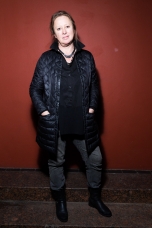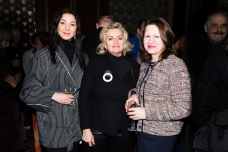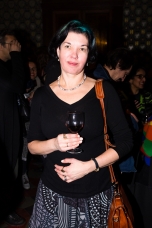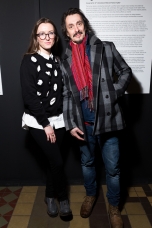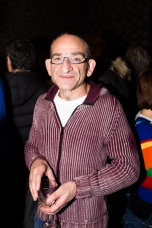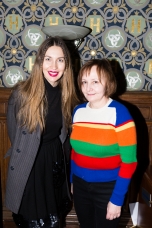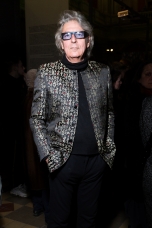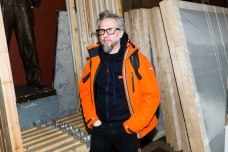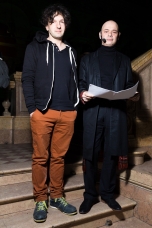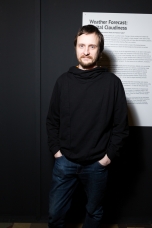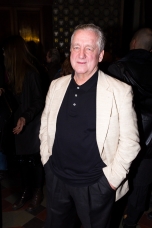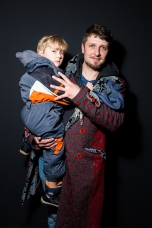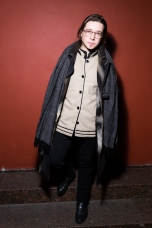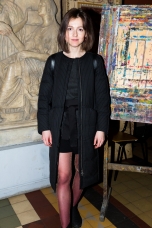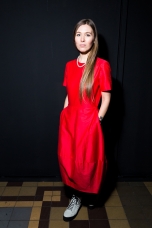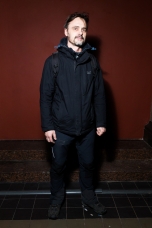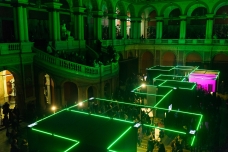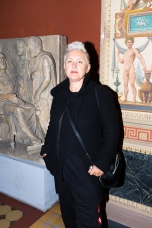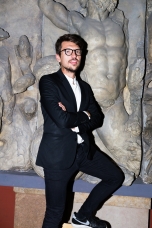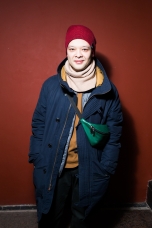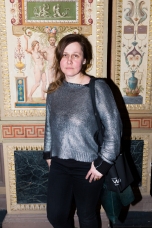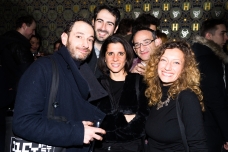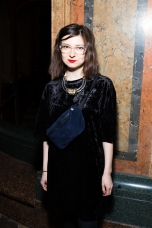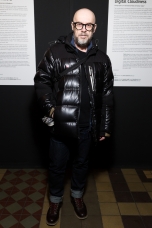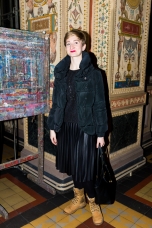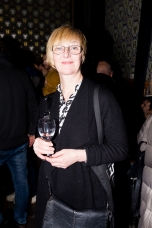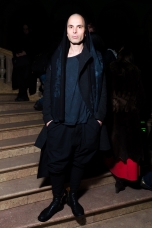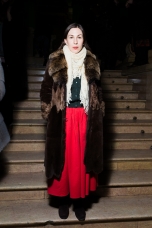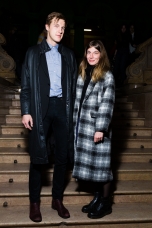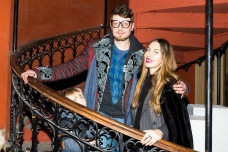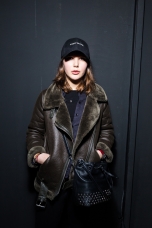From September 8 to October 22, the “Nevskaya Curtain” exhibition hall at the Museum of the History of St. Petersburg in the Peter and Paul Fortress is hosting a contemporary art exhibition about the Siege of Leningrad titled Quiet Voices. The project’s curator, Lyudmila Belova, gave a tour to a Dialog correspondent and shared the concept uniting the exhibition and each individual piece.
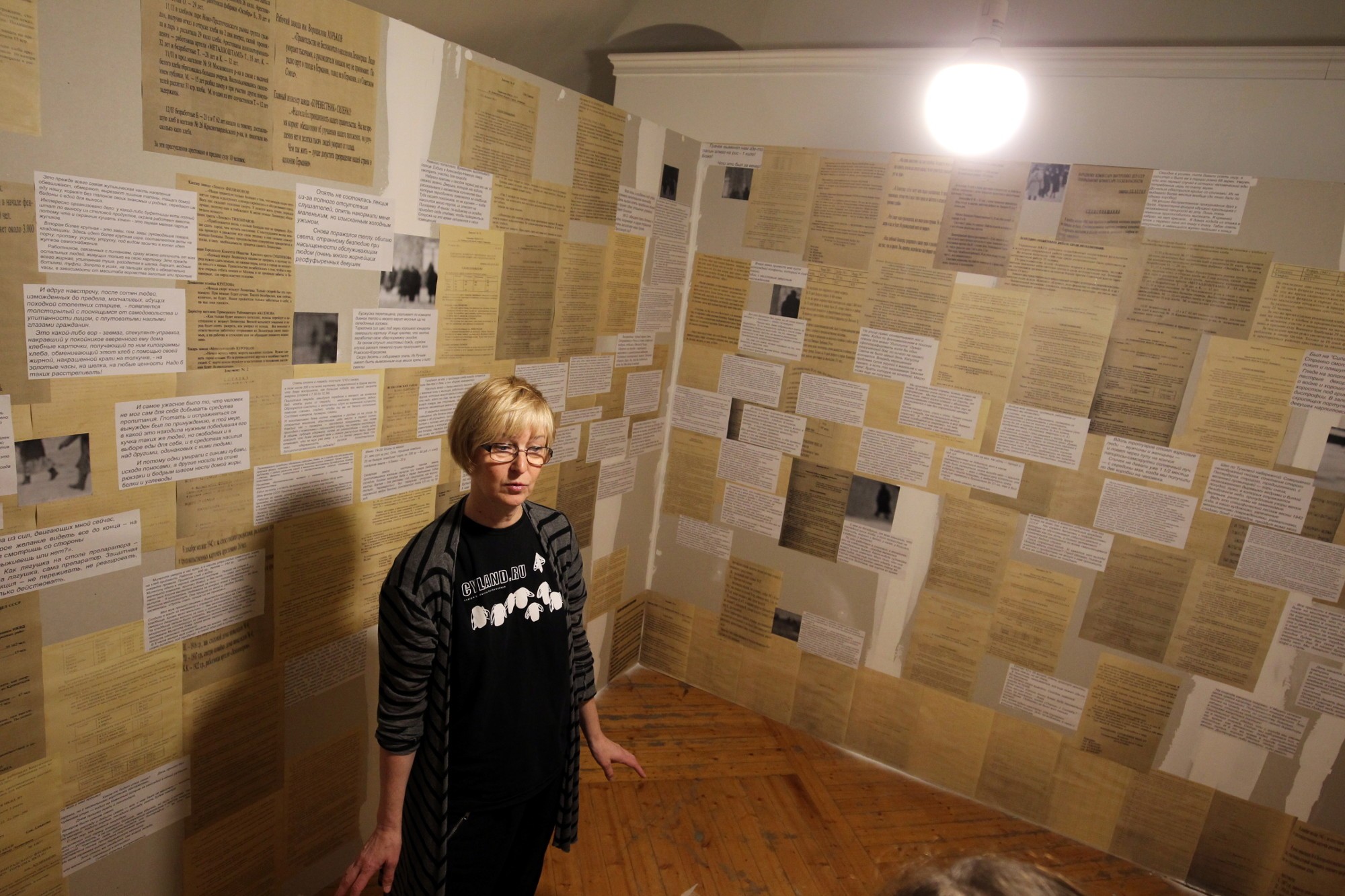
Preparation for the Exhibition
All the objects were created specifically for this exhibition. These are not the kinds of artworks that could be displayed anywhere. They were made with the theme and purpose of this exhibition in mind. There is one piece that was borrowed from an artist, but it fits the theme very well. Before preparing for this exhibition, we worked with students from the Rodchenko School in Moscow, the ProArte Foundation, and the Hamburg Academy. The project was called “900 and About 26,000 More Days.” The exhibition was shown at Kunstverein in Hamburg and the New Museum in St. Petersburg. I worked as the curator of this project. We spent two years delving into the theme. Some of the artworks created for this project are included in our exhibition. The piece “Earth,” which was displayed in Hamburg and at the New Museum as a sketch, is now realized in material here.
Combining the Seige Theme with Contemporary Art
I am a person who lives in this city. Five sisters of my grandmother lived through the seige, and I was protected from information about those events. Today, much of this information is available. We can read, reflect, and form our conclusions. Contemporary art is simply the language we speak today. Every era has its own language, and the language used to talk about the seige in the past does not offer the same kind of dialogue with the modern person.
It is time to talk about the seige in a contemporary language. The seige needs to be made visible to the modern person. Right now, this theme is associated exclusively with older people who are given flowers on September 8 and January 27. It exists locally, although it affects every person living in this city. Many of the artists participating in the exhibition have family connections to the seige—great-grandparents, grandparents, neighbors, acquaintances. For many, it is still very close. The exhibition serves as an impulse to engage visitors to learn more.
On Young People’s Knowledge of the Seige.
People are all different. I periodically read disturbing reports about schoolchildren who know nothing about the seige. Of course, this is alarming. I can speak about the young people we worked with on this project. At the beginning, they knew much less. Then, as we worked, their knowledge grew. Now, they are the ones who are guiding this topic. They themselves begin asking others: “What do you know about the seige?” This missionary work was not part of our task, but it has become a need—when you know something, you want to share it. Of course, there is a problem, and it is that the standard approach to this theme kills any desire to be interested in it. It becomes a duty. The fact that there are no exhibitions, no places where the seige is discussed in a new language, a language that resonates with people living in a completely different time, is also a huge shortcoming.
On the “Seige Gene”
There are medical studies on this subject, which say that the effect is reflected primarily in the grandchildren of seigesurvivors, not in their children. As for the emotional component, it’s a matter for each individual. I remember that, although all five of my grandmother’s sisters were seigesurvivors, no matter how much I asked them, they cried more than they spoke. But when I read the Seige Book, I experienced a shock that has stayed with me ever since. It is a question of information and the desire to learn it. Many people try to say: “Yes, the seige happened, but I don’t want to remember, I’d rather not talk about it.” This was deliberately done in Soviet times—to only talk about heroism, and to remember the million people who died only on days of remembrance.
Exhibition Title
The exhibition is called Quiet Voices because it uses real diaries of seigesurvivors. Each artist has their own diary that they worked with. Through these quiet voices, which began to sound at our exhibition, it becomes possible to bridge the distance between us and the people who lived through the seige.
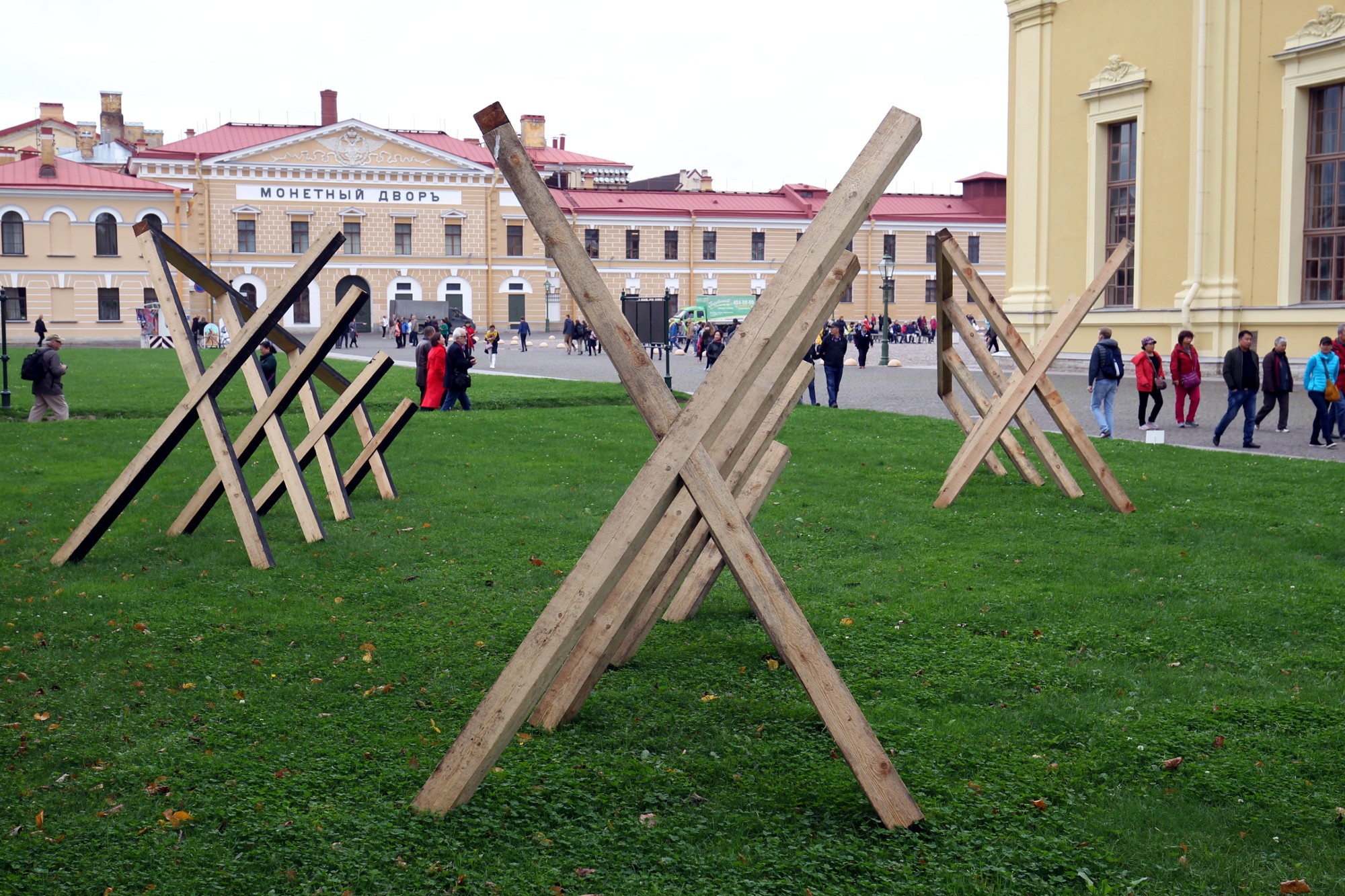
Peter Belov’s Installation “Geometry of Memory”
In fact, this is a counter-monument. A counter-monument differs from a monument in that it can be a public art object. That is, it is placed in public space, and no special paths lead to it. It is an impermanent site, but the contact is much more intimate. Communication with viewers can be unexpected because people go to monuments consciously and deliberately, often at a specific time, but with a counter-monument, they don’t.
Here, if you don’t read the annotation, you may only find associative connections: what does it remind you of, what could it be associated with? If you read the annotation, you will understand that the object is related to the seige. You may see something resembling anti-tank hedgehogs or windows taped with an X shape. The main beam on which the crosses are strung is a symbol of the weight—the burden—that we all carry when recalling the days of the seige.
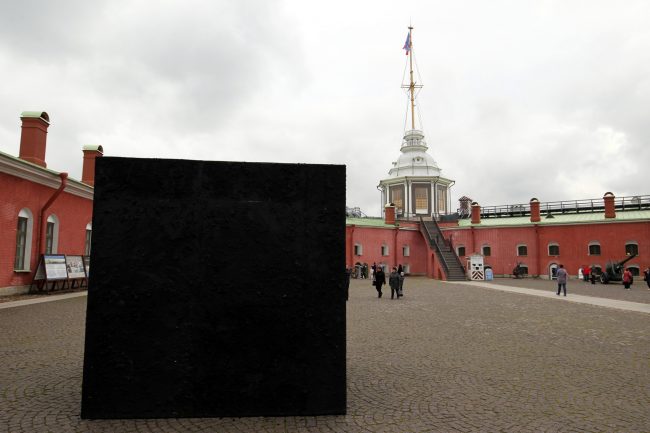
Alexander Androsov and Vadim Zaytsev’s Object “Earth”
This object is dedicated to “sugar earth.” This was the name given to the earth gathered after the bombing of the Badaev food warehouses. It was saturated with sugar and other products that had been stored there. This earth was sold for 20 rubles per jar. The object is a three-meter cube, all its sides are covered with earth mixed with ash and some artifacts that could have been found. It is an object growing from the ground, like our memory of the seige, which we are finally bringing back up.
The form is abstract, with no figurative representation; one must first see it and then understand what it is. This is the path from visual impulse to curiosity. People begin to think: What is this? What is it about? Such a chain makes people curious about the topic again, prompting them to read seigediaries online. These are considered the most accurate testimonies, direct speech, and a shorter distance to the past. Everything written later is often interpreted depending on various factors. The object “Earth” could be realized in another, more durable format—such as granite or marble. Public art is almost absent in our city right now.
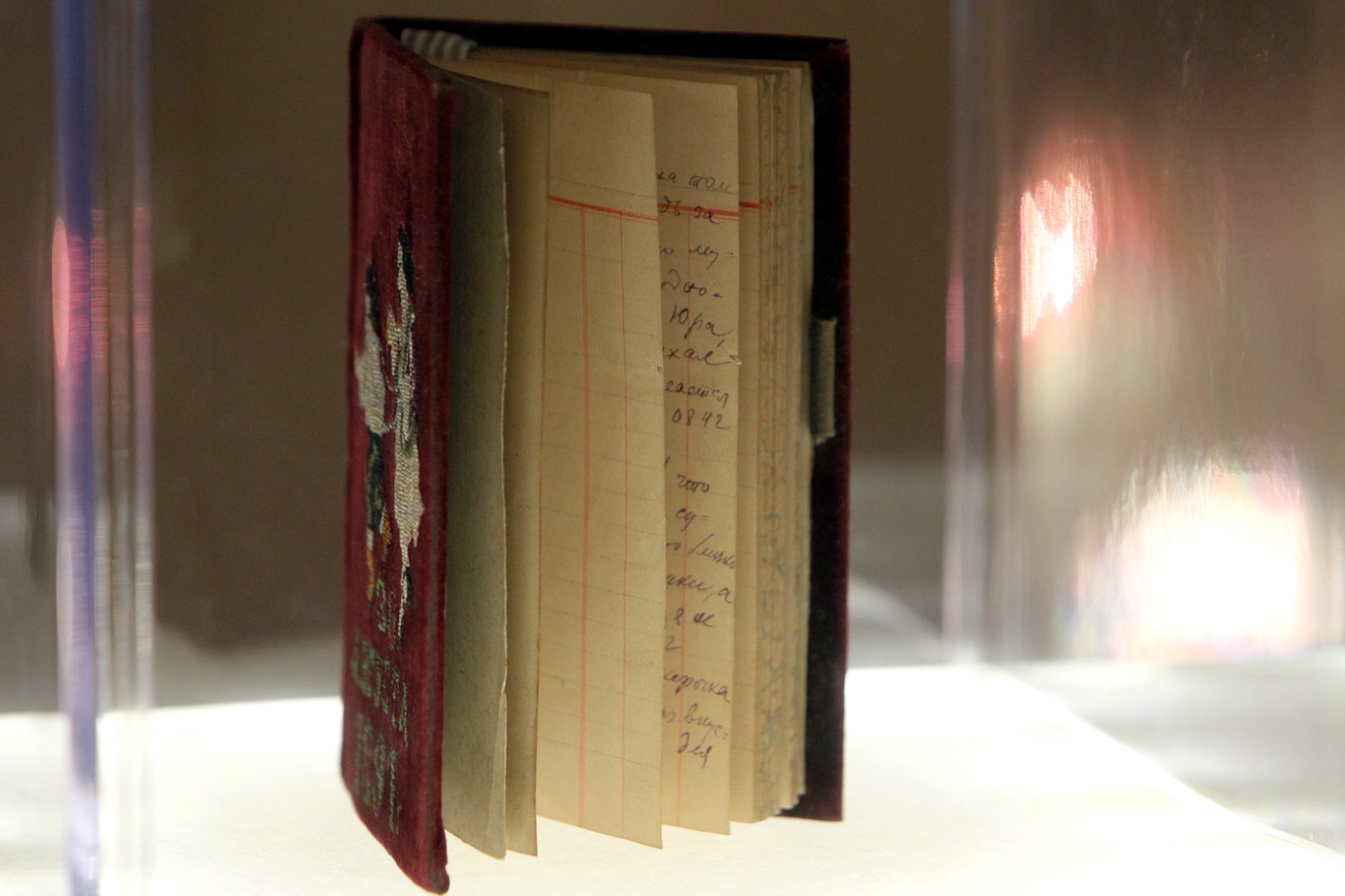
Alexander Terebenin’s Installation “Without Camouflage”
Alexander Terebenin is a photographer and artist. His relative, the famous photographer Boris Smirnov, had the opportunity to photograph in Leningrad (although this was forbidden) because he worked on camouflaging military ships. There are no amateur photographs related to people, daily life, hunger, and the horrors of those times. Everything was censored.
Alexander Terebenin found a roll of film in a family archive that had been deemed a failure. It had double exposure. He printed it and composed it. The images appear to depict a walk through snowy Leningrad. This overlapping frame effect adds to the feeling of emptiness, desolation, and the otherworldly state that characterized many of Boris Smirnov’s photos. We see what seems to be a failure, yet at the same time, it offers a new perspective on Leningrad, one we have not seen in other photographs. Beside it is the main object—Boris Smirnov’s actual seigediary, which contains only three entries. It is kept in Alexander Terebenin’s family archive.
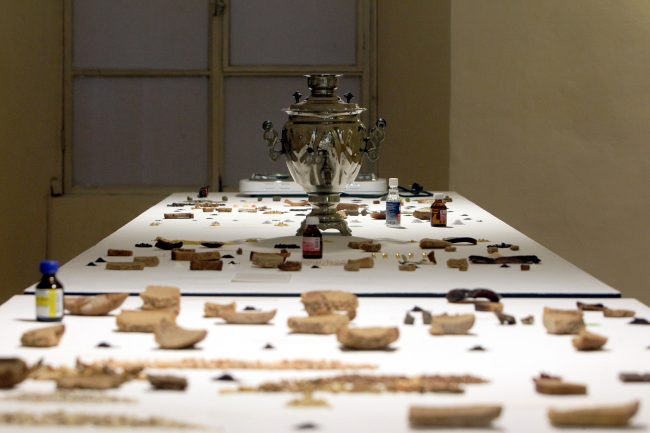
Anastasia Kizilova’s Installation “Kitchen of Hunger”
Anastasia found Ivan Zhilinsky’s diary online, where he described day by day what he and his family ate. This became the seige menu. On this table, we see things that seem impossible to eat. It is a visualization of what a person is willing to do when they are very hungry. Everything is presented in detail.
The artist made drawings, complementing them with excerpts from Zhilinsky’s diary. For example: “We traded Olya’s light crepe dress for three kilograms of bread.”
Vita Buivid’s Installation “Evidence”
Here hangs a crepe dress that Vita Buivid has cast in plaster, thus casting memory. The dress has been transformed into a sculptural relief, and the plaster has made it into an object.
Here, there is a very vivid excerpt from Galya Zimnitskaya’s diary: “On our way home, we saw a dead young woman on the snow. She lay on the roadway of Lesnoy Prospect. Apparently, she had fallen off a cart when the hearse tipped over on a bump. At first, we thought it was a mannequin from a broken store window, she looked so beautiful. She wore a dark, light dress with a deep neckline. Her lovely, tanned arms were folded across her chest, like a singer’s. Her magnificent dark hair spread out on the dirty snow. Her charming, not yet emaciated, slightly angular face with thick eyelashes was surprising. My mother and I stood and watched this lost beauty with great pity, and people passed by, and no one stopped. December 26, 1941.”
Olesya Gonserovskaya’s Painting “Soup”
This is a painting. Do we see here a plate or a halo? We see it through a veil. Or is it the veil of the temporal distance between us and this event, or is it something that has appeared to a person who is dreaming? The frame of the painting is strange. It consists of various segments and symbolizes the unfinished framing of the theme of the seige. We do not have a clear, established image or knowledge of the seige. These knowledges are constantly being replenished.
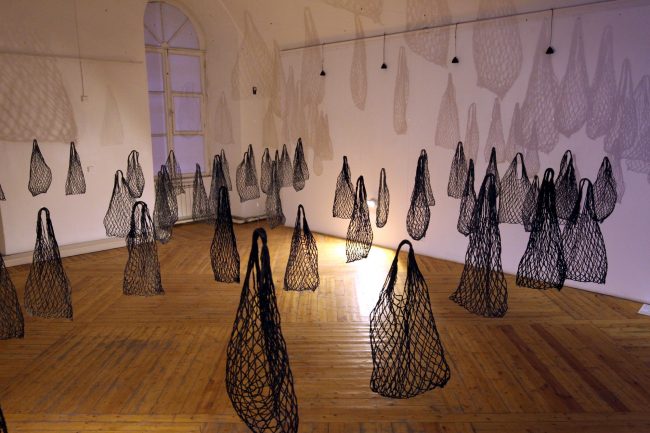
Ivan Govorkov and Elena Gubanova’s Audio Installation “Queue”
The installation is based on Lydia Ginzburg’s book Notes of a SeigePerson. Here we see a space filled with empty net bags. The title itself says, “Perhaps, I’ll bring something.” The bags are arranged in the shape of a queue.
On a voice recorder, the authors have recorded phrases that Lydia Ginzburg heard in the queues during the seige. Typically, the conversations are about something mundane, not about suffering or horror. People are simply waiting for life. One can walk inside the installation, and the sound will change.
The emptiness of these net bags symbolizes the emptiness of the stomach, the emptiness around a person, the informational emptiness. In essence, the people of the seigedid not know what was happening to them; no one told them how many people had died. We can mentally add to this installation the people who are waiting and hoping.
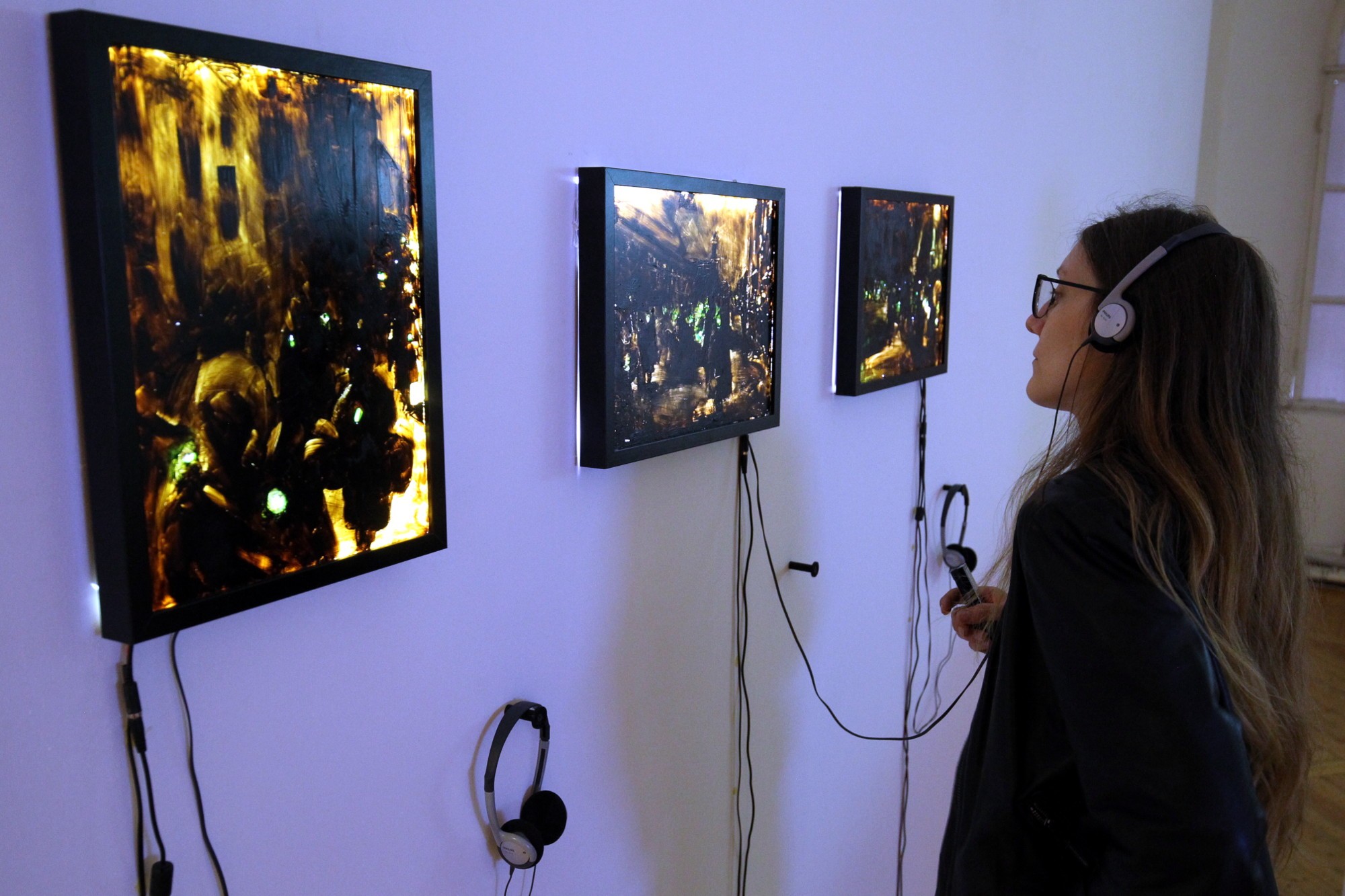
Vadim Leukhins’s Installation “Black Light”
During the seige, the streets were very dark and quiet at night. City lighting was not working, and, moreover, windows were darkened in houses to prevent enemy planes from bombing targets. There was no public transport. People who moved around the city in total darkness were given glowing phosphorus badges. They were necessary so that people could see each other and avoid accidentally bumping into each other in the dark. It was as if fireflies were walking through the city.
At first, the badges were made in factories, but over time it became clear that it was a very harmful production. Then, they were made by craftsmen, and the badges took different forms – some were in the shape of brooches or stars.
In this installation, you can view Vadim Leukhins’s paintings on glass, illuminated by LEDs, and listen to the sound, thus entering the atmosphere of a city immersed in darkness. The author recorded the sound, perhaps looking for it, maybe even inventing it—because, naturally, there is no sound from the seige. The actual seigesound, a deeply affecting element, has almost not reached us.
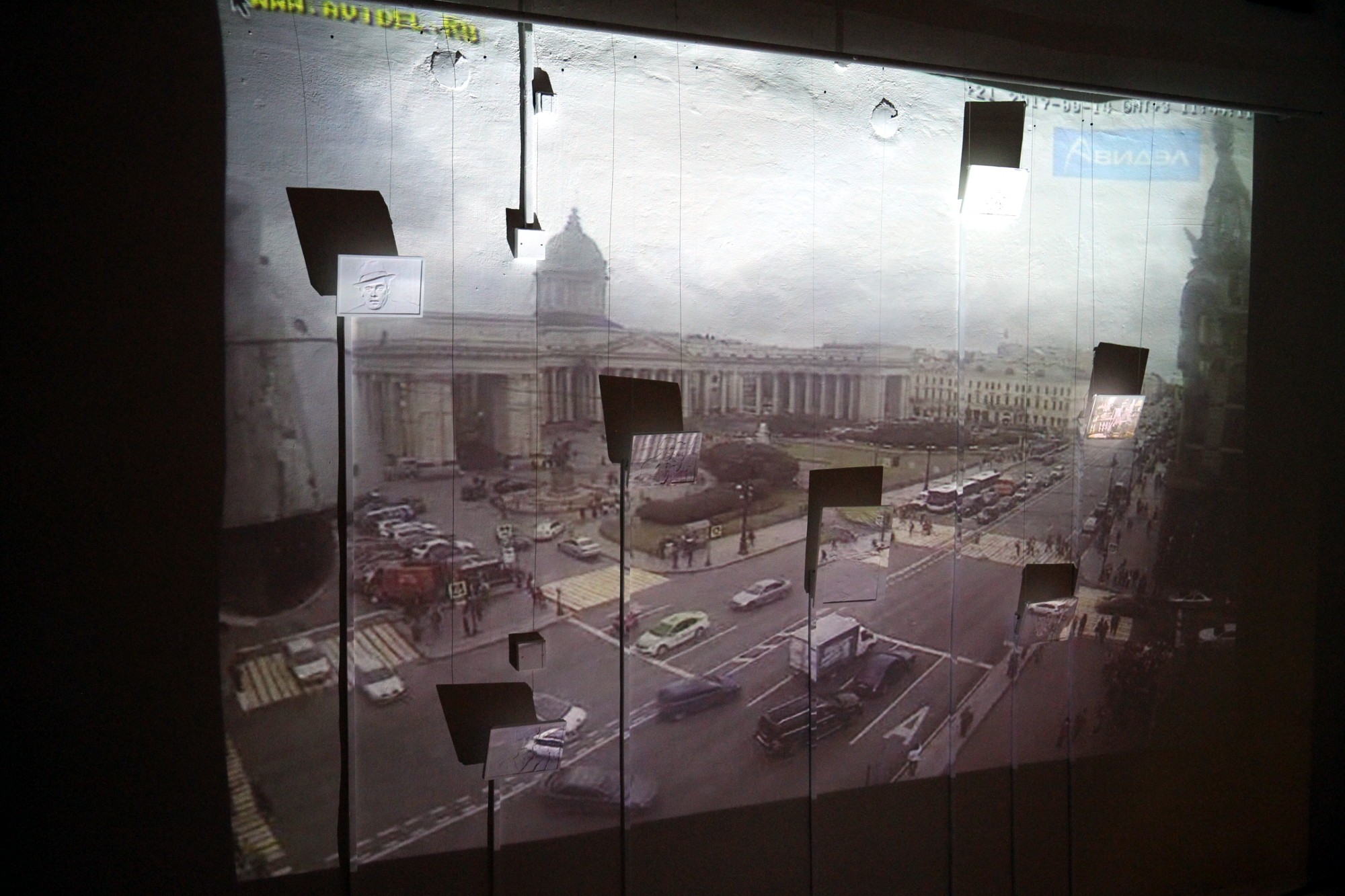
Anna Frantz’s Video Installation “Blind Spot”
“Blind Spot” is a term used by motorists. It refers to an area that is not visible in the rearview mirror. Forgetting about it is dangerous, as something might happen there, and you won’t be warned. The term is applied by Anna Frantz to immersion in the past. The number of people who died in this city falls into the “blind spot.” They are invisible and unheard.
In the background of a live broadcast from Nevsky Prospect, photographs from the past appear. These are family archive photos of Anna Frantz. Her relatives, who were in the besieged city, were evacuated across Lake Ladoga via the Road of Life. This entire work is primarily dedicated to them and all the people who went through the seigeand evacuation. Many people perished during the evacuation, not only because bombings sank ships and vehicles, but also due to the organization of the evacuation. As we look at our Nevsky Prospect, at ourselves, we see these people who are present in the field of our city.
Natalya Tikhonova’s Video Installation “Verbatim”
In the work Verbatim, Natalya Tikhonova overlays a day from her life onto a day from Lyubov Shaporina’s life, reading her diary, copying it, and thinking about it.
Vyacheslav Kuritsyn’s Installation “Comfortable Reading”
Here we can sit in a comfortable chair, put on headphones, and listen to excerpts from Vyacheslav Kuritsyn’s novel Sleep and Believe, which he wrote in 2007. The text is dedicated to the seige. We are in a very comfortable situation, but the topic itself is uncomfortable. There is noticeable criticism of modern people: they don’t want to know about something that won’t entertain them, amuse them, or distract them from the usual, difficult everyday tasks.
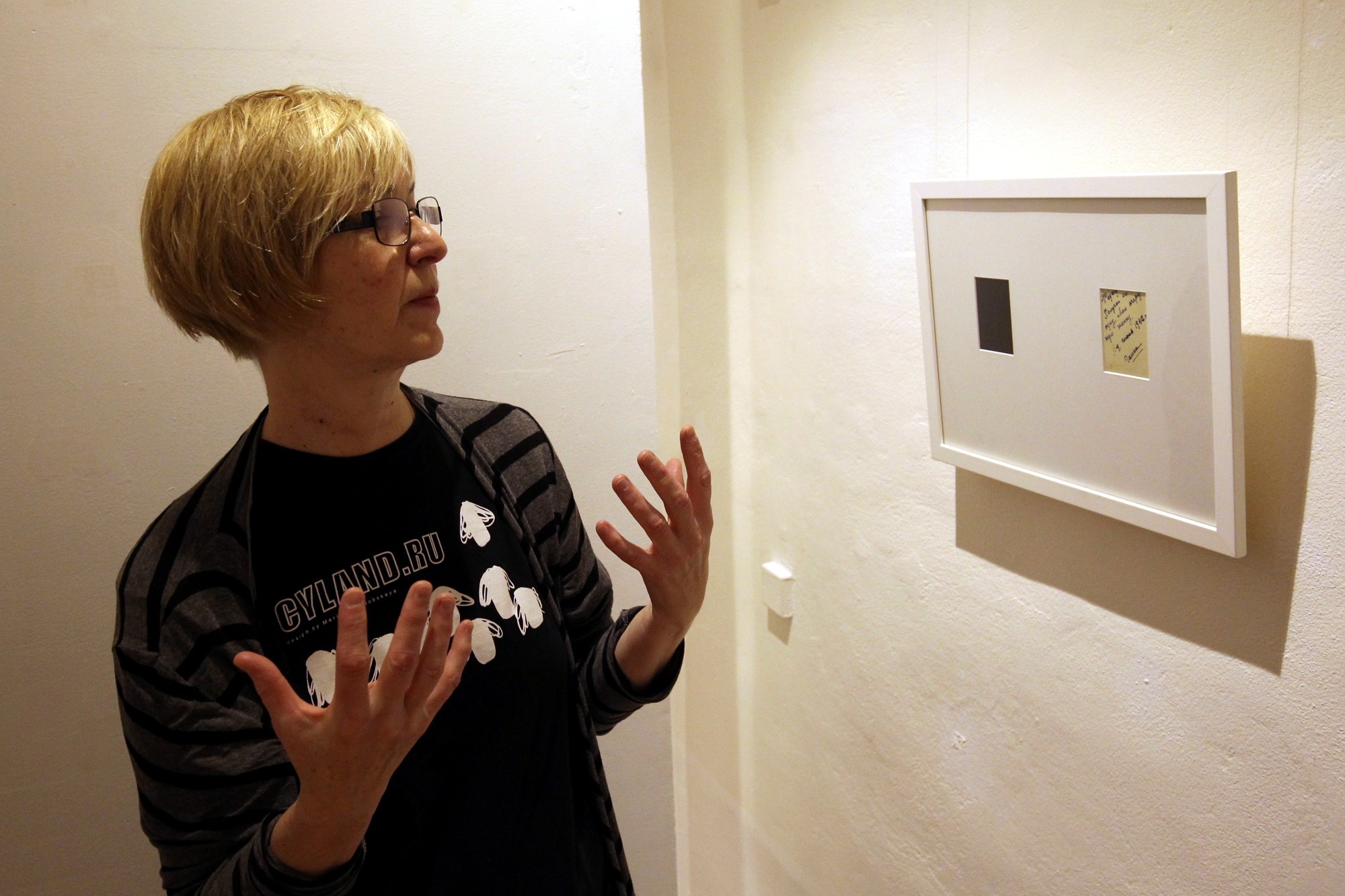
Maxim Sher’s Installation “Prohibition of the Image”
There was an amateur photographer named Nikitin, who went out into the streets with a camera to photograph the destroyed buildings, but he was detained by NKVD officers. He was sent to a labor camp as a spy, where he died. Later, he was rehabilitated.
Here we see a podium with sheets printed in Braille. We can touch these diaries, but we cannot read them because we don’t know this language. This represents the impossibility of fully feeling everything that happened in the city at that time. Prohibition of the Image includes several parts. Here is also a photograph depicting a rather unusual scene for a besieged city. We see a smiling young woman holding a bicycle. This was a rarity. The theme is also explored through a guidebook, placed by Maxim Sher on the wall. Guidebooks were also prohibited, as owning one could be equated with anti-government activity. We see the names of places in the city, but the actual images are black. We hold such a guidebook, but we must imagine the images. In another part of the installation, Maxim Sher presented photographs made in the style of photographer Nikitin. Here we see what a person taking photographs in the streets of besieged Leningrad could pay for with their life.
In a separate booth, there are special NKVD reports that allow us to “hear” the voices of different social groups. We learned all this from Nikita Lomagin’s book The Unknown Seige, in two volumes. The second volume is entirely devoted to documents. We know that everyone, without exception, worked—”everything for the front, everything for victory”—and no one criticized, but it turned out that this was not entirely true. The voices confirm this assumption.
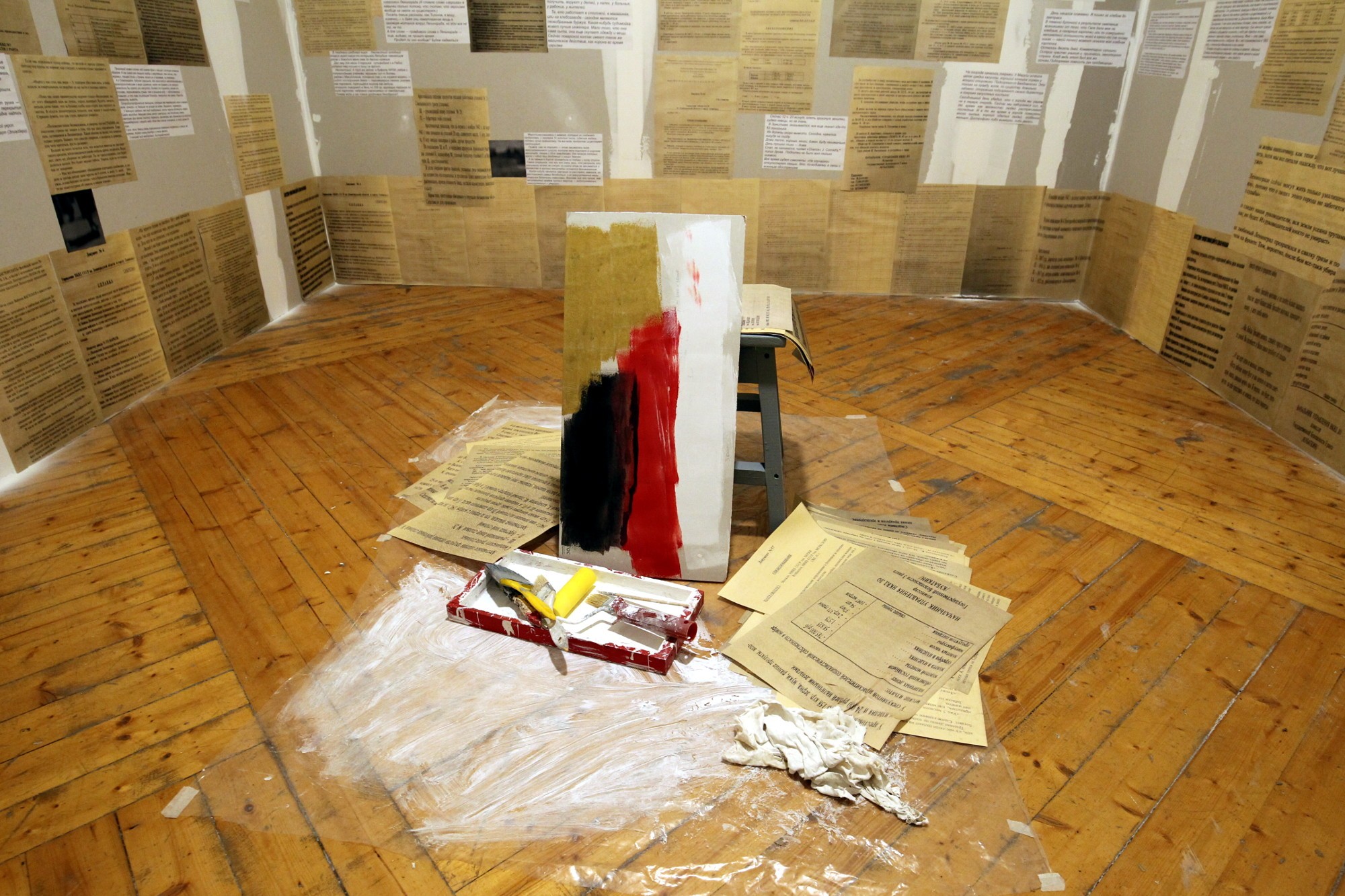
Lyudmila Belova’s Installation “Room”
I also use Nikita Lomagin’s book The Unknown Seige. Here, pages from this book are printed, containing special reports. Through the dry language of the reports, we can read about life in the city. The statements of different people are provided: teachers, workers, engineers, creative professionals—people from all walks of life. Over these special reports, on a white background, are excerpts from seige diaries. They are not signed because I wanted to create a general hum, noise, a collective chorus.
There are also painting tools here. They create a situation of renovation. We see a paint sample. What color should we paint this room? Red, black, white, or gold? It was already painted red. The lighting of the seige during Soviet times was actually red. A lot was not told to us. White is a neutral narrative, as if nothing had happened. Now we ask what people know about the seige, and they do not answer. Even in our country, many people are unsure about how many people, according to their assumptions, perished, let alone what people in the West know about it. This is very bitter and sad. The death of more than a million people seems to have never happened. To paint it black is to speak only of the horrific, for example, cannibalism. To paint it gold is to make it a monument and worship it on commemorative days, again forgetting the quiet voices that emerge from the seige diaries.
by Masha Vse-Taki
Interview Agency “Dialog” September 18, 2017

